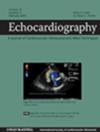Evaluation of Segmental Myocardial Work and Exercise Tolerance in Hypertension Patients With Left Ventricular Remodeling Through Stress Echocardiography
Abstract
Purpose
This study aims to elucidate the characteristics of segment myocardial work (MW) and reserve function through exercise stress echocardiography (ESE) and to explore the associations between MW parameters and exercise capacity in patients with left ventricular remodeling due to hypertension (LVRH).
Methods
A total of 105 patients with LVRH (LVMI ≥ 115 g/m2 for males and LVMI ≥ 95 g/m2for females) underwent ESE examination following established guidelines. Additionally, 59 healthy subjects served as a control group. Speckle tracking software was employed for analysis, calculating MW parameters by integrating longitudinal strain with the noninvasive left ventricular pressure curve. Global and segmental myocardial work indices, reserve function, and exercise capacity were evaluated and analyzed.
Results
The global work index (GWI), global constructive work (GCW), and global wasted work (GWW) were significantly elevated both at rest and peak in the LVRH group, whereas global work efficiency (GWE) was reduced. GWI shows an increasing trend from the basal to the apex, The apex segment GWI of the LVRH group exhibited the highest peak value (2754.5 ± 231.0 mmHg), while there was no significant difference in peak GWI at the basal level between the two groups. The GWI-rest and ΔGWI showed significant correlation with exercise metabolic equivalent (MET) (r = −0.502, p < 0.001) and diastolic function E/e′-peak (r = 0.612, p <0.001). Multivariable linear regression demonstrated that GWI-rest, ΔGWI provided powerful incremental value in independent associations with exercise capacity.
Conclusion
MW parameters reflect the contractile force under hemodynamic overload, offering a more compelling perspective for evaluating cardiac function, including segments value. GWI-rest and ΔGWI is significantly correlated with exercise endurance in LVRH patients.

 求助内容:
求助内容: 应助结果提醒方式:
应助结果提醒方式:


